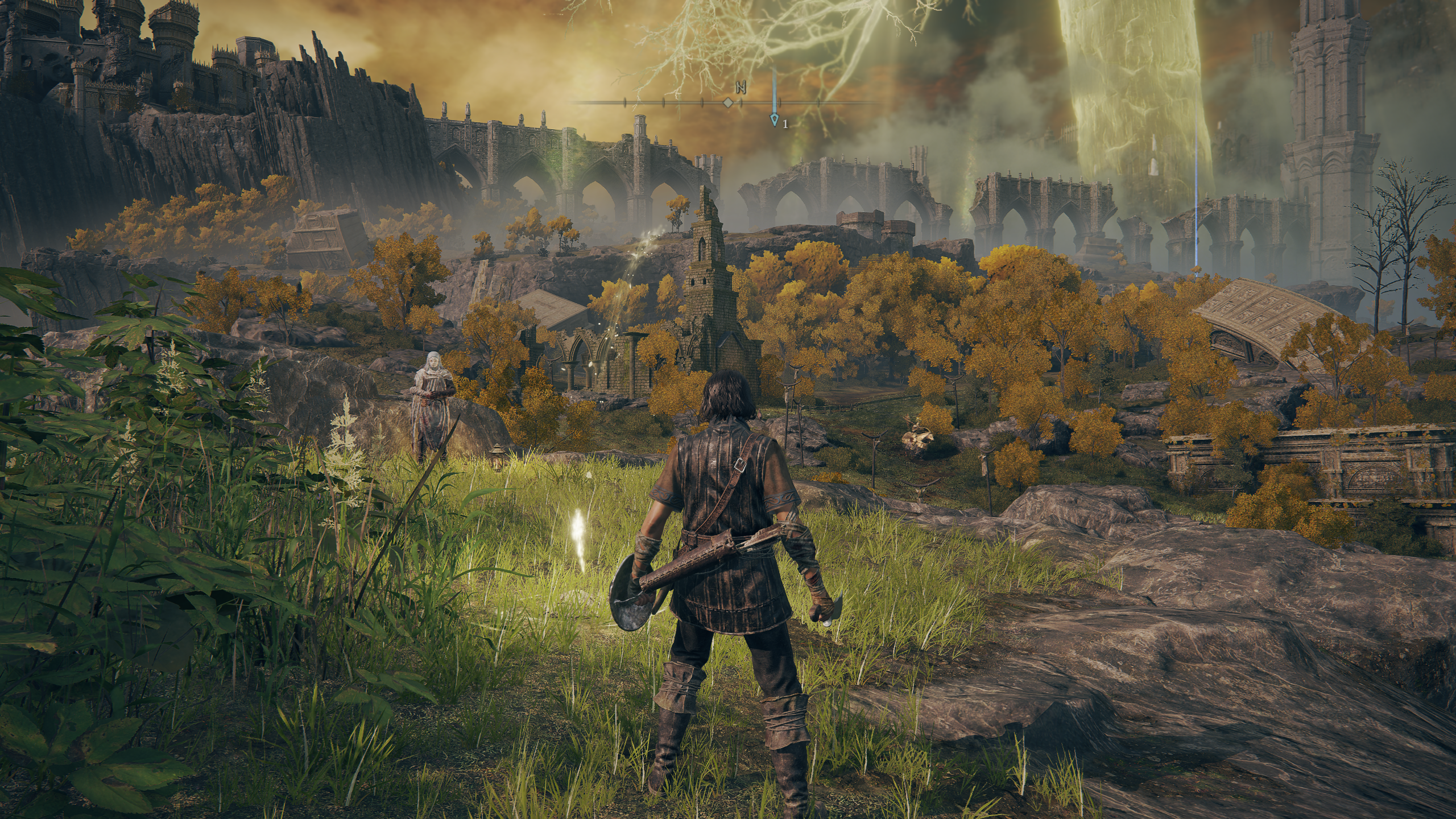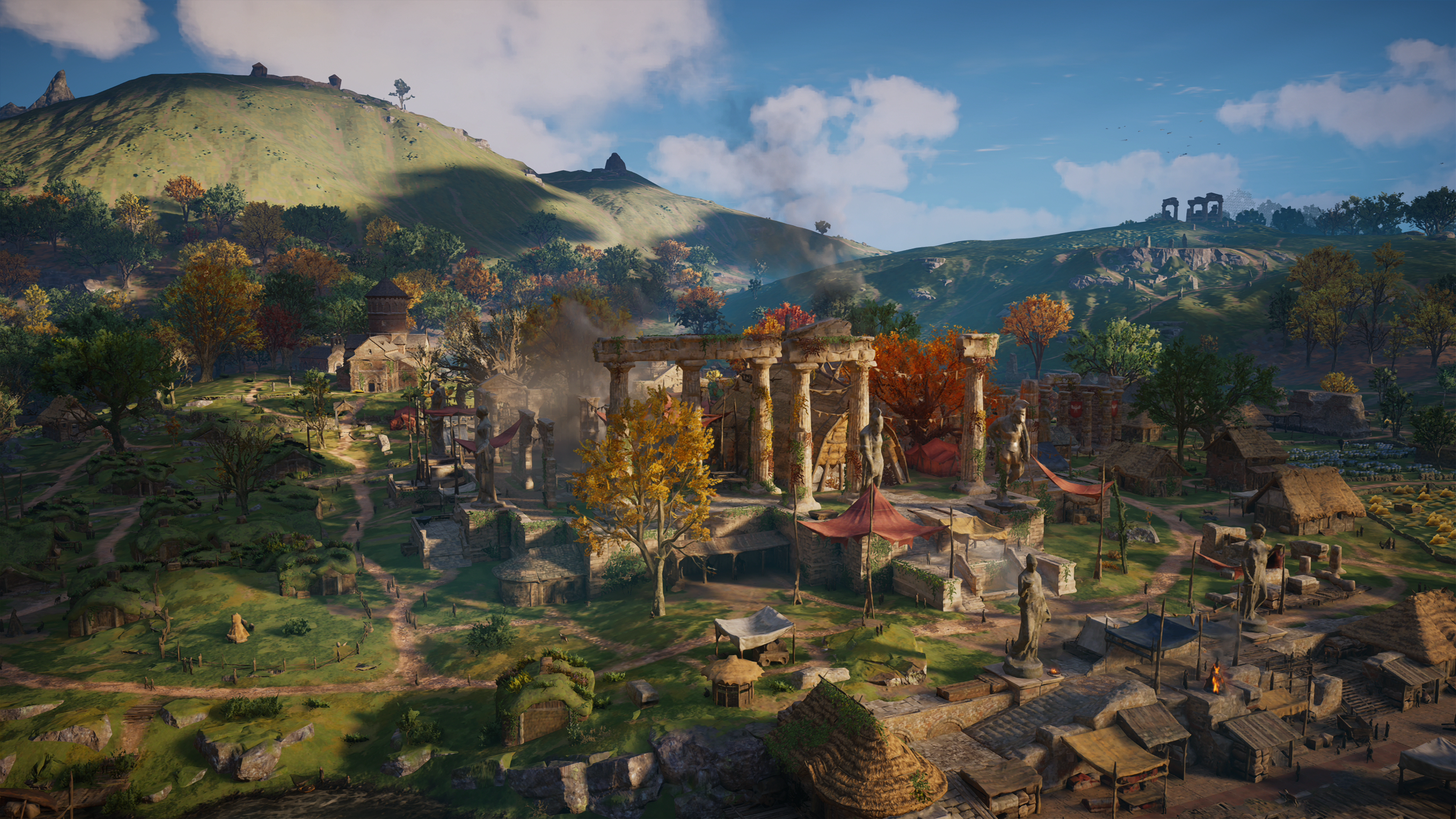How To Add Amd Fsr To Games
AMD Radeon Super Resolution is FSR-style upscaling for almost any game
Like Nvidia Prototype Scaling, just for AMD GPUs

GPU-based upscaling has proven to exist one of the most useful additions to gaming PC tech in years. Large performance improvements in exchange for only a minor drop in visual quality, if any at all? Yes please and thanks. Nvidia's DLSS has established itself as the aureate standard of upscalers, outperforming AMD'due south FidelityFX Super Resolution (FSR), simply the Radeon makers are at present readying 2 new offerings: FSR 2.0 and Radeon Super Resolution (RSR).
FSR 2.0 looks to be a straight upgrade on the current 1.0 version, promising sharper pic quality with "optimised anti-aliasing" to better compete with the born, AI-assisted edge smoothing of DLSS. Information technology will all the same need to be implemented in games by their developers, though – unlike RSR, which aims to work with simply almost any game by applying its upscaling algorithm at the GPU driver level.
If RSR'southward premise sounds familiar, it's probably because of Nvidia Image Scaling (NIS), which released a few months back and performs almost exactly the same function: forgoing more than high-tech upscaling techniques in favour of a universal approach that bypasses the demand for native game back up. Of form, NIS still needs a GeForce GPU to work, so RSR does accept its own function to fill up if you've passed over Nvidia's best graphics cards in favour of an AMD model. Information technology also deviates further from FSR past specifically requiring a Radeon RX 5000 series GPU or newer.
RSR is out right now via a big Radeon Software update, whereas FSR 2.0 is coming Q2 2022: that'southward sometime betwixt April and the end of June. I've been testing a preview build of Radeon Super Resolution, and although information technology probably won't match FSR 2.0 on overall quality, it looks like a worthy alternative for when your AMD GPU could use some help.
The Radeon RX 6500 XT I used certainly could, what with its meagre 4GB of RAM. Despite this I set about seeing how it could handle both 4K and 1440p, while installed in our examination PC along with an Intel Cadre i5-11600K and 16GB of RAM. Like Nvidia Paradigm Scaling, RSR is enabled showtime by toggling it on in the GPU'southward software utility (Radeon Software, in this instance) so lowering the in-game display resolution of whatever game you want to upscale. For games that lack an sectional fullscreen mode, you lot'll also demand to go into Windows' display settings and drop the monitor resolution in that location likewise. That's a lot more faff than just slapping on FSR or DLSS, though arguably not the worst price to extract for RSR'south much wider compatibility.


First upwards was Assassinator's Creed Valhalla, in which I driveling the Radeon RX 6500 XT past performing a exam run at native 4K with Medium graphics settings. That produced an boilerplate of merely 18fps, but with RSR gear up to upscale from 1440p, this climbed all the manner to a playable 34fps. And with respectable image quality too – as yous can meet from the screenshots above, there's next to zippo in the fashion of muddiness or overzealous sharpening in the upscaled prototype. Yous'd really take to zoom in to run across any item differences. Y'know, like this:

Even and so, that tiny detail driblet is no great shakes next to the advantage of (very nearly) doubling the average frame charge per unit over native resolution. A good offset for RSR.


In Hitman iii, the quality departure betwixt native 4K and upscaled 1440p is starker, mainly cheers to a more pronounced haziness; the upscaled image undoubtedly looks more heavily processed. Information technology's a tad darker, too.

Again, though, all that comes with a dramatic performance boost. With Ultra quality settings, the Dubai criterion averaged 22fps at 4K and 43fps when upscaled from 1440p.


RSR can also exercise skilful work when upscaling from 1080p to native 1440p; you lot don't need one of the best 4K monitors to take advantage of information technology. It gave Shadow of the Tomb Raider a big boost on its Highest quality setting, jumping from 35fps at 1440p to a much smoother 53fps when upscaling from 1080p.

A closer wait reveals at that place is a loss in sharpness visible on afar objects, though up close the difference is harder to notice.


Spotter Dogs Legion gets a lot of value out of RSR as well. First there'south the operation gain: 47fps on 1440p, using the Medium quality preset, becomes 67fps when upscaling from 1080p. And the full general quality difference is barely there:

There's perhaps a tiny touch more visible aliasing in the upscaled epitome, but not to the extent that I noticed it much in motion.


Total War: Three Kingdoms has some more conspicuous jaggies when upping the scale from 1080p to 1440p. Native 1440p isn't hyper-smooth either, but because RSR maintains the same AA without introducing its ain (as DLSS does), it's never going to be 100% as precipitous.

There'south also a grainy outcome that's nowadays in native resolution, but becomes more pronounced afterward upscaling is practical. Still, that might be worth accepting when RSR boosts performance as much every bit it does: on Medium quality, Iii Kingdoms' Battle benchmark pushed out 78fps afterward upscaling, compared to 47fps at native 1440p.


Perennial performance trouble child Elden Ring can benefit too. On Medium quality, I averaged 46fps with the resolution at native 1440p; dropping this to 1080p, with RSR doing the residue, brought the frame rate upward to 59fps.

It didn't help with Elden Ring'south stuttering - dissimilar the Steam Deck - and there's some quite noticeable sharpening with RSR, but it's nothing ruinous.



God of State of war also provided the ways to see how RSR matches upwards against its smarter blood brother, FSR. As it turns out, RSR lands somewhere between FSR'southward 'Quality' and 'Ultra Quality' settings, at least when upscaling from 1080p to 1440p. The Original quality preset and native 1440p averaged 42fps in my criterion run, rising to 57fps with FSR on Ultra Quality, 60fps with RSR, and 66fps with FSR on Quality.


To my optics, Ultra Quality FSR is meliorate than RSR at preserving the quality of native res: sharpness is near the same on purely anti-aliasing terms, but in that location'due south slight smudginess to certain textures with RSR that Ultra Quality FSR avoids. That said, RSR does beat Quality FSR, which doesn't look all that close to 1440p at all. It's surely no coincidence that this upscaling bureaucracy reflects the rendering resolution each 1 uses when targeting 1440p: Ultra Quality FSR uses 1970x1108, RSR uses 1920x1080, and Quality FSR uses 1708x960.
Radeon GPU owners should therefore stick to the top FSR setting wherever it'south available, though in fairness, the whole point of RSR is to step in when it isn't. And this commuter-level tech tin can do a rather fine task, fifty-fifty if it usually ends up "shut enough" to native res quality every bit opposed to matching it 1:one.
Information technology's as well worth noting that while RSR worked as expected in most of the games I tried, it wasn't 100% compatible with 100% of games. For the life of me, I couldn't get upscaling from 1080p to 1440p to work in AssCreed Valhalla and Hitman 3, even as information technology performed admirably with 1440p to 4K. Information technology didn't appear to be a borderless vs. fullscreen upshot, but the only 'help' I got from AMD's software was an incorrect exclamation that I was attempting to run the game at native res.
I likewise tried RSR in Horizon Zero Dawn, and Radeon Software didn't even admit that I was attempting to upscale – successfully or otherwise. Then far these problems announced specific to certain games, and a small number at that, and so hopefully AMD can become them fixed.
For the most function, Radeon Super Resolution is worth keeping in mind for when your Radeon card struggles to keep up with a high-res monitor. With some more shine, it'll be the ideal understudy for FSR.
How To Add Amd Fsr To Games,
Source: https://www.rockpapershotgun.com/amd-radeon-super-resolution-is-fsr-style-upscaling-for-almost-any-game
Posted by: richardsonplut1952.blogspot.com


0 Response to "How To Add Amd Fsr To Games"
Post a Comment